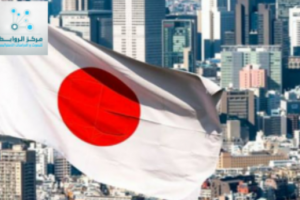By: Shatha Kalel
In July, Japan’s producer price index (PPI) rose for the sixth consecutive month, registering a 3% increase compared to the same month in the previous year, according to the Bank of Japan. This rise, though slightly below the expected 3.1%, reflects the mounting pressures on Japanese producers, particularly in the context of escalating energy costs following the termination of government subsidies for public services. While this ongoing increase in the PPI aligns with broader inflationary trends, it also raises important questions about the underlying factors driving this trend and the potential implications for Japan’s economic stability.
Energy Costs and the End of Government Support:
The primary driver behind the steady rise in the PPI has been the sharp increase in energy costs. With the end of government support for public services, particularly in the energy sector, producers have been forced to absorb the full brunt of rising prices. This shift has had a significant impact on production costs, particularly in industries heavily reliant on energy inputs. The removal of subsidies not only increases direct costs for businesses but also compounds the challenges of managing operational expenses in an already strained economic environment.
The rise in energy costs is not just a localized issue but reflects broader global trends. Energy prices have been volatile due to factors such as geopolitical tensions, supply chain disruptions, and fluctuations in global demand. For Japan, a country that heavily depends on energy imports, these global dynamics have had an outsized impact on domestic production costs, which are now being passed on to consumers.
The Role of a Weakening Yen:
Compounding the effects of rising energy costs is the continued weakening of the yen. The July report highlighted a striking 10.8% increase in the yen-denominated costs of imported goods. As the yen depreciates, the cost of imports rises, especially for energy and raw materials, which are crucial for Japan’s manufacturing sector. The weak yen has been a double-edged sword; while it makes Japanese exports more competitive abroad, it simultaneously increases the cost of imports, thereby fueling domestic inflation.
The interplay between the weakening yen and rising import costs presents a complex challenge for Japanese policymakers. On one hand, a weaker yen can stimulate export-driven growth, but on the other, it risks importing inflation, particularly when global commodity prices are high. This situation puts the Bank of Japan in a difficult position as it tries to manage inflation without stifling economic growth.
Implications for Japan’s Economy:
The persistent rise in the PPI, even if slightly below expectations, signals ongoing challenges for Japan’s economy. Businesses are grappling with higher input costs, and these costs are likely to be passed on to consumers, leading to broader inflationary pressures. This situation is particularly concerning given Japan’s prolonged struggle with deflation and its recent attempts to achieve stable inflation.
For the Bank of Japan, the rising PPI adds another layer of complexity to its monetary policy decisions. The central bank has maintained an ultra-loose monetary policy for years, aiming to stimulate growth and achieve a 2% inflation target. However, with producer prices rising, there is a growing risk that inflation could overshoot, especially if these cost pressures spill over into consumer prices. The challenge for the Bank of Japan will be to balance the need for continued economic support with the risk of allowing inflation to rise too quickly.
Conclusion:
Japan’s 3% increase in the PPI for July highlights the continued impact of rising energy costs and a weakening yen on the economy. While the rise was slightly below expectations, it underscores the challenges facing Japanese producers and the broader economy. As energy prices remain high and the yen continues to weaken, businesses will need to navigate an increasingly complex economic landscape. For policymakers, the focus will likely be on managing inflationary pressures without undermining economic growth. The coming months will be crucial in determining how these dynamics play out and what steps the Bank of Japan may take in response.

